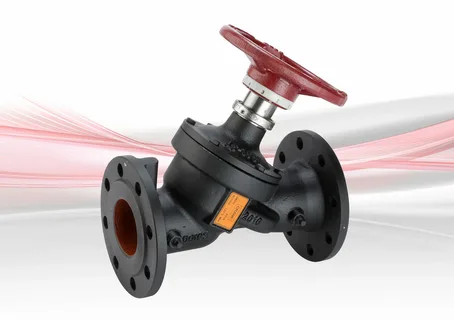Electronic Variable Orifice | A System Explained Of Its Roles and Purpose
The evolution of modern technology has improved the efficiency of the fluid and power steering systems in vehicles and even industrial machines. In Industrial Applications, the Electronic Variable Orifice (EVO) is one of those innovations that assist in controlling fluid motion in many applications. If you have been looking for answers to questions such as “What is an electronic variable orifice?”, “What is a variable orifice?”, “What is an EVO system?”, or “What is an EVO component?”, this guide will explain these systems and give you the information you are looking for.
What Components Make Up An Electronic Variable Orifice
An EVO system differentiates itself from other components in a car’s hydraulic or power steering by its ability to control fluid flow through electronic regulation based on a preset demand. In simpler terms, it helps in energy optimization and smoother seamless operations in motors and turbines.
EVO’s omni directional control has made it more preferable in many industries.
When compared to a fixed orifice, which allows a constant fluid flow to pass, an EVO is more advanced since it allows changes based on varying conditions which helps reduce energy wastage. There is an improvement of system responsiveness as a result of the push for precision that comes with electronic control.
What are the components of an EVO
A strutter system blocks incoming and outgoing fluid from the unit that controls the orifice which means it is not inactive, but it is void of fluid at that period.
An electronic unit control or ECU along with the sensors keeps track of the speed, load changes and steering input.
To regulate fluid pressure, the EVO modifies the opening diameter in relation to real-time conditions.
As a result, steering feel is enhanced at high speeds and the effort required for steering is lesser at low speeds.
This improves fuel economy and decreases the load on the system.
EVO technology can be found in industry-wide applications for power steering systems, HVAC controls, and the regulation of fluid flow.
Defining Variable Orifice:
A Variable Orifice is found in hydraulic, pneumatic, and automotive systems. It is a flow-control device that dynamically alters the opening size of an orifice to control the flow of a liquid or gas through a system.
Types of Variable Orifices:
Mechanical Variable Orifice:
Used in industrial machinery and HVAC systems, this apparatus adjusts flow using a valve or dial.
Electronic Variable Orifice (EVO):
This type is found in power steering, fuel systems, and smart HVAC controls. It adjusts automatically in real-time using sensors and actuators.
Applications of Variable Orifices:
In power steering systems, they control hydraulic pressure dependent on vehicle speed.
In HVAC systems, they regulate refrigerant and air flow to enable efficient cooling and heating.
In industrial machinery, they maintain constant fluid pressure in a hydraulic circuit.
In medical equipment, Variable Orifices are found in the gas and fluid delivery systems of ventilators and diagnostic machines.
The electronic variable orifice fluid control system is quite useful for steering applications and automates fluid control in many HVAC, medical, and industrial systems. As the name would suggest, an electronic variable orifice (EVO) system is the one that allows for the modification of an orifice opening electronically which in turn, controls fluid flow. When it comes to power steering in a vehicle, the EVO system takes charge of maintaining the proper fluid pressure to provide optimal steering assist based on vehicle speed and current driving conditions.
EVO System in Automotive Power Steering
Most modern vehicles are equipped with power steering. Power steering enhances maneuverability on a vehicle and can vastly improve driving ergonomics. While driving at low speeds, check out how easy it is to turn a vehicle’s steering wheel. It feels like a lightweight object spins on the head of a motorcycle racer. Don’t get too comfy though; it’s not nearly as easy jack it when you are gunning down the highway. Yes, that’s right. Enthusiasts often have a love hate relationship with power steering and have learned to tone down its usefulness around corners or sharp spins. With electronic steering systems, EVO systems have come to improve precision to those spinning wheels.
To ensure proper and smooth power steering performance, the system utilizes an ECU that controls the EVO. The ECU controls how wide or small the orifice is depending on the vehicle speed. At lower speeds, it increases the amount of hydraulic fluid delivered to the steering mechanism by wide opening the orifice. This allows drivers to turn with minimal effort. Simultaneously, when you are cruising down the highway, the orifice gets narrower, increasing fluid control also makes for sharper, more sensitive moves the steering wheel.
Working Parameters
At low speeds:
1. More fluid is pumped and steering gets lighter and effortless.
2. This leads to improved comfort and ease of moving the vehicle during city traffic.
While cruising down the highway:
1. Fluid flow is controlled, hence making steering more stable for enhanced control at higher speeds.
The system also ensures compact size which reduces the overall weight of the vehicle, improves acceleration, while also improving the functional scope from urban driving to highway cruising.
EVO in Industrial and HVAC Systems
Aside from controlling power steering, EVO systems manage both fluid and air circulation in advanced industrial automation systems and HVAC units. Moreover, they assist in:
For optimal cooling, air conditioning units have refrigerant flow targeted.
Heavy machinery has controlled hydraulic forces.
Laboratory and pharmaceutical equipment has refined fluid control.
Owing to their multifunctional flexibility, EVO systems are common across industry sectors and functions making them a vital contributor towards meeting energy efficiency standards.
What Is an EVO Component?
A component of an Electronic Variable Orifice system is defined as an EVO component. These partitions are interrelated in that they measure the flow on the inlet and outlet adjusting it as required through identified controls on the system, thus providing real-time feedback.
Key Components of the EVO System:
Electronic Control Unit (ECU):
Controls the system as a whole.
Brain of the EVO System.
Incorporates with the speed and pressure and load placed sensor devices.
Commands are sent to dynamically control the size of the orifice.
Variable Orifice Valve:
Power steering and similar systems such as HVAC and hydraulic systems have the fluid flow modifier as an adjustable opening.
It varies in accordance with signals from the ECU.
Besides, the valve’s responsive actions are guided by the commands.
At the interface, fluid command signals can be directed to the ECU providing the same logic.
Located in power steering, HVAC and hydraulic systems.
Pressure, Temperature and Speed sensors:
Engine load, driving speed and environment are the monitored driving.
Optimized steering effort, automated fluid control and regulation are done with.
Hydraulic / Solenoid driver:
Mechanism which alters the electric impulses from the ECU into mechanical signals is called the hydraulic actuator.
Changes the position of each valve orifice on the EVO system as needed.
These EVA components mesh together to modulate the precise volume of fluid at every level to increase efficiency and performance.
Benefits of Electronic Variable Orifice Systems
Because of its great advantages, the EVO system is implemented in power steering mechanisms as well as in the management and control of fluids:
1. Better Fuel Economy
EVO technology reduces unnecessary hydraulic pressure to improve the engine’s workload and fuel consumption.
2. Improved Steering Comfort and Control
With low and high city speeds, EVO power steering offers light and firmer steering, respectively, for increased highway stability.
3. Minimum Wear on the Components of the Hydraulic System
By aiding the dynamic adjustment of pressure, EVO systems increase the lifespan of valves, pumps along with other hydraulic parts.
4. Decreased Power Consumption in Industrial Systems
EVO fluid-controlled flow in HVAC or industrial systems optimizes energy usage, lowers electricity expenses, and improves overall efficiency.
5. Smooth Performance with Enhanced Adaptivity
EVO systems have the advantage of changing in real-time, allowing them to adapt to varying driving or operational conditions, which makes for seamless experience.
The Prospects of EVO Technology
The EVO System significantly alters control in power steering, automation of industrial processes, fluid management, and even in HVAC systems. Now, be it the aerospace, automotive or the medical industry, EVO technology continues to bolster precision and control while optimizing efficiency throughout every industry.
Recognizing modern engineering’s feats requires understanding “what is an electronic variable orifice?”, “What is a variable orifice?”, “What is an EVO system?”, and “What is an EVO component?”.
As new advancements in technology occur, we can expect new iterations of EVO systems guaranteeing even more peak energy efficiency, refined optimization in automation, and greater flexibility in application. Be it for EVO’s car enthusiasts, engineers, or tech professionals, EVO technology is set to seamlessly transform the world of fluid steering precision and fluid control.




Post Comment